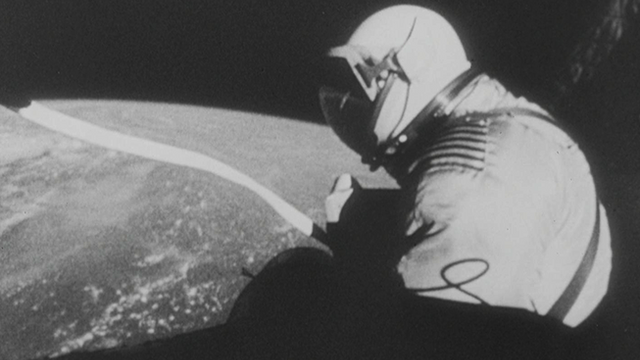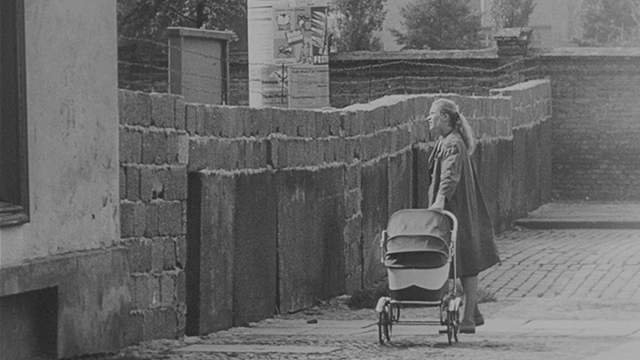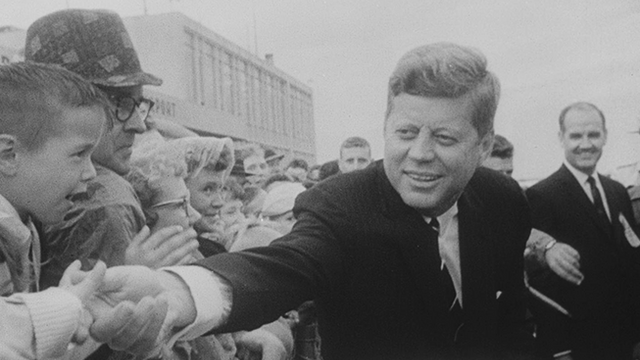
"Blick in die Welt"
West German Newsreel
Provenance
Doclights
Production period
1945-1986
Number of films
approx. 2.000 (complete collection)
Running time
5-17 min
Material
35mm | mainly b/w
Topics
Politics, current affairs, society, military, economy, art, culture, sports, Cold War
Filming Locations
Worldwide: Germany (Western Allied Zone; 1945-49), Germany (Soviet Zone; 1945-49), Germany (East), Germany (West), France, Italy, Spain, Great Britain, Austria, Swiss, Russia, Poland, Czech Republic, USA, South America, Cuba, Asia, Israel, Africa, Australia
Background
As early as 1914 there were newsreels in Germany, which were shown in cinemas before the main films and served as an important medium of information, but above all as a propaganda tool. After the Second World War, the National Socialist "Deutsche Wochenschau" (produced from 1940-1945), was replaced by new newsreels in the individual occupation zones of Germany. The initiators were the respective Allies in their zones of occupation, who wanted to convey a new world view to the German population that was modelled on the understanding of democracy in the West or the Soviet interpretation of socialism in the East. Thus, in the Soviet occupation zone, "Der Augenzeuge" (The Eyewitness) was produced, while its West German counterparts, "Welt im Film" (World in Film) and "Blick in die Welt" (View of the World) were made in the American-British zone and in the French zone respectively.
The weekly production of "Blick in die Welt" began in Baden-Baden in 1945, initially as a German-French venture. After the founding in 1949 of the Federal Republic of Germany (FRG), the production was taken over by the "Deutsche Filmwochenschau Blick in die Welt GmbH", which moved its headquarters to Berlin in 1970. As with the other West German newsreels, the focus was initially on the re-education of the German population – the ideology of National Socialism was to be replaced by liberal, democratic values. At first, the main focus was on the reconstruction of Germany, the reappraisal of National Socialism (Nuremberg Trials) and the beginning of the Cold War. Like "Der Augenzeuge", "Blick in die Welt" contained segments about global events from the very beginning. To facilitate the exchange of this material with newsreel editors in Europe, Asia and America, an international network was established from the 1950s onwards.
Increasing competition from the emerging television industry from the 1950s onwards led in part to a shift in content with more entertainment items included in the newsreels. Politics and world affairs, however, remained central components of "Blick in die Welt" with reports for example, on the construction of the Berlin Wall, the student movement in 1968 and the American-Soviet space race.
By the 1970s, due to the increasing reach of television with its more up-to-date news formats, cinema audiences lost interest in newsreels. "Blick in die Welt" was the last West German newsreel to be discontinued: Thanks to the integration of entertaining and humorous elements, it had been able to hold its own in German cinemas until 1986.
Over 2,000 issues (around 20,000 minutes of film material) of "Blick in die Welt" were produced between 1945 and 1986, first in the French occupation zone and later in the Federal Republic of Germany.
With reports on important national and international events, themes and personalities of contemporary history, "Blick in die Welt" represents an important source of film material on the second half of the 20th century - from the end of the Second World War and the Cold War to the eve of the fall of the Wall. The newsreel reflects both the formation and development of the Federal Republic of Germany from its beginnings to shortly before German reunification, as well as the West German view of contemporary events, through international film footage shot around the world.



